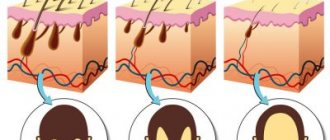It is necessary and important to protect yourself from unwanted pregnancy. For women, this issue is probably more acute. It is she who will have to make a very difficult decision - to give birth or terminate the pregnancy? The latter option negatively affects her health and can cause complications. Modern gynecology has a wide range of contraceptive methods . Of the numerous contraceptives with different mechanisms of action, gynecologists often recommend contraceptive IUDs.
How does the IUD work?
There are different shapes and types of IUDs. However, the principle of operation of the intrauterine device in any case is based on the fact that it represents a foreign body and, by its presence in the uterus, causes several effects:
- Mechanically disrupts the ability of the endometrium to degenerate and makes it unsuitable for the attachment of a fertilized egg.
- Stimulates the release of prostaglandins and thereby increases the tone of the uterus, which also prevents the attachment of the egg.
- Enhances the production of macrophages - special cells of the immune system that are capable of destroying sperm.
- Increases the viscosity of cervical mucus, which is why sperm cannot enter either the uterus or the fallopian tubes.
- Spirals containing copper and silver also have a spermatotoxic effect.
- IUDs containing homones additionally suppress ovulation and endometrial growth.
The Pearl index, a coefficient indicating the effectiveness of a contraceptive method, for intrauterine devices is 0.2. That is, with proper use of the IUD, pregnancy occurred in only two out of a thousand cases over the course of a year.
According to this indicator, the IUD is the most effective method of contraception, surpassing even some birth control pills in its reliability.
When should you see a doctor?
You should consult a doctor if you develop a fever soon after insertion of the IUD.
Women should see a doctor if they experience the following symptoms soon after having an IUD inserted:
- body temperature above 38°C;
- chills;
- intense or difficult to bear cramps;
- severe sharp pain in the abdomen;
- very heavy bleeding.
You should also contact your doctor if, at any time after insertion of the IUD, a woman experiences the following:
- absence of menstruation when using a copper IUD;
- positive pregnancy test result;
- loss of the IUD or suspicion of its movement through the cervix.
Types and features
Currently, there are about 50 variants of IUDs, which differ in shape, size and materials. Therefore, they are usually classified by generation:
- The first is inert IUDs. The most popular were spirals made of polymer materials in the shape of the Latin letter S. Today, due to side effects and low efficiency, this type is practically not used, and in some countries it is even prohibited.
- The second generation is copper-containing products. The first representatives of this generation were produced with copper wire inserted into the structure. Their main disadvantage was the too rapid release of copper, due to which the coil had to be replaced every 2–3 years. More modern IUDs come with an additional silver rod, which slows the release of copper and makes its use more durable. The most popular of this series are the Nova T intrauterine device, Multiload Cu-250 and Cu-375, as well as Sopper-T.
- Third generation - spirals with hormones. The impetus for their creation was the desire to combine the advantages of the IUD and birth control pills. Externally, they are a T-shaped structure, the stem of which is filled with the hormone levonorgestrel or progesterone. How does an intrauterine hormonal device work? Almost the same as hormonal pills. The device is designed in such a way that equal doses of the hormone enter the woman’s body every day. The validity period of such products is 5 years, and the most popular of this generation are Mirena and Levonova.
The types of spirals are very diverse. Usually, women who are thinking about using this means of protection have a logical question: which is better, hormonal or non-hormonal intrauterine device?
Only a gynecologist can solve this problem after examination and receiving test results. Despite the fact that you can purchase any IUD at a pharmacy without a doctor’s prescription, you should not make such a purchase yourself.
Advantages
Of course, the main advantage of modern intrauterine devices is that this product is the most effective of all those currently existing. However, a high percentage of reliability is not their only advantage. Their advantages also include:
- Ease of use. The intrauterine device will be valid, depending on the type, from one year to five years and you will not have to take pills every day or think about any other methods of contraception.
- Can be used immediately after childbirth and during breastfeeding.
- Easy reversibility of the method. After removal of the spiral, the reproductive properties of the body are restored in just a few months.
- Even hormonal IUDs do not have such a strong effect on the female body as birth control pills, and, therefore, have much fewer contraindications for use.
- Unlike a condom or vaginal ring, they do not cause discomfort or reduce sensation.
- Taking into account the long validity period, even expensive products are more cost-effective to use than any other means of protection against pregnancy.
Flaws
Unfortunately, there are no ideal methods of contraception, and such a reliable method as the IUD has its drawbacks. The disadvantages of this method include:
- Increased risk of developing acute inflammatory diseases.
- Not a single contraceptive device protects against sexually transmitted diseases, so this method of protection is more suitable for established, permanent couples.
- In the first time after installation, menstruation is usually more painful and occurs more abundantly and takes longer.
- The device may spontaneously fall out, for example, during active sports or lifting weights.
Perhaps the most serious disadvantage of using an IUD is the increased risk of developing an ectopic pregnancy due to disruption of the contractile activity of the fallopian tubes and the uterus itself.
Complications
IUDs relatively rarely cause complications, which may include the following:
- spiral loss;
- hormone-related problems, such as changes in blood pressure or blood clots;
- ectopic pregnancy or implantation of a fertilized egg outside the uterus;
- infections;
- inflammatory diseases of the pelvic organs, if the woman already had an infection before the insertion of the IUD;
- damage to the uterus.
Women who:
- smoke;
- have a history of cardiovascular disease;
- over 35 years old.
It is not true that IUDs can travel to other parts of the body, such as the lungs and brain.
Rules of Use
The intrauterine device is not a simple method of preventing unplanned pregnancy. Its use will require you to follow several important rules. And the question of whether this method of contraception is suitable for you should be decided only by a gynecologist after examination and tests. The type of spiral that suits you is also selected by your doctor. Typically, experts advise using this type of contraception if:
- As a woman, increased fertility and unwanted pregnancies happen all too often.
- There are diseases for which pregnancy is contraindicated.
- The woman or her partner has genetic pathologies that also prevent pregnancy.
How is an IUD installed?
You can install the IUD regardless of the phase of the menstrual cycle, but doctors still advise doing it from the fourth to the eighth day, if you count from the first day of your period. Before the procedure, smears for microflora, a general blood and urine test are taken, and an ultrasound examination is performed to exclude pregnancy and determine the size of the uterus.
The procedure itself is quite simple and painless, so it is performed on an outpatient basis and without anesthesia. However, in the first days after installation, you may be bothered by unpleasant sensations in the lower abdomen, aching or cramping pains, which normally go away on their own.
A follow-up examination is required after a week, and during this week it is better for the woman to abstain from:
- From intense physical activity.
- Hot baths.
- Taking laxatives.
- Sexual life.
- Taking aspirin or medications containing acetylsalicylic acid, as this may cause bleeding.
After each menstruation, you will need to independently check the presence of threads from the spiral, and control examinations, in the absence of complaints, will need to be carried out every six months.
How is an IUD removed?
It is not necessary to wait for the entire duration of the spiral. If you wish, you can ask your gynecologist to remove it at any time. In the absence of complications, removal, as well as installation, is not particularly difficult and is performed on an outpatient basis. The doctor just needs to pull the antennae. However, despite the simplicity of the procedure, you should not carry it out yourself at home.
In rare cases, for example, when the spiral tendrils break or penetrate the uterine wall, its removal can be carried out using a hysteroscope. This device is a tube with special channels for scissors or forceps. In this case, the procedure can be carried out in a hospital.
Before removing the IUD, the gynecologist also necessarily prescribes an ultrasound in order to clarify its location in the uterine cavity. During removal or immediately after it, pain and bleeding may occur.
Preparation before inserting an intrauterine contraceptive device
Before inserting an IUD, the patient must consult with a gynecologist, undergo a gynecological examination, and also undergo the necessary laboratory tests. This will allow us to determine the patient’s health status and the presence of possible contraindications to the installation of an intrauterine contraceptive. A detailed examination of the uterine cavity makes it possible to study the anatomical features of the organ and determine the depth at which the IUD will be installed.
The laboratory and clinical diagnostic methods that the patient must undergo include:
- Vaginal smear;
- Biochemical and general blood examination;
- Analysis for sexually transmitted pathologies;
- Cervical smear;
- Blood for HIV, RV, hepatitis, syphilis, blood type;
- General urine examination;
- Colposcopy;
- Ultrasound examination of the pelvic organs.
If there are no possible contraindications to the installation of an IUD, pregnancy must be excluded before the procedure. For this, the woman undergoes a special test.
Contraindications
The IUD protection method is not suitable for everyone, although it works well in most cases. Like any contraceptive, the intrauterine device has its own contraindications. Conventionally, they can be divided into absolute and relative, when the final decision is made by the doctor after the necessary tests.
The first group includes:
- Acute or frequently exacerbating inflammatory diseases of the female sphere.
- Suspicions of malignant tumors of the cervix or uterine body.
- Uterine bleeding, the cause of which is not clear.
- Suspicion of pregnancy.
- Pathological changes in the uterus that may interfere with the correct insertion or placement of the device.
- Malformations of the cervix or the uterus itself.
The second group of contraindications includes:
- Heavy, painful and prolonged, longer than six days, menstruation or the presence of bleeding in the period between them.
- Endometriosis of the cervix and ovaries.
- Abnormal configuration of the uterus or too small size.
- Myomatous nodes, severely deforming the uterine cavity.
- Previous ectopic pregnancy.
- Allergies to the components included in the spiral, for example, to polymer substances or copper.
- Low hemoglobin levels, bleeding disorders, or other blood disorders.
In some situations, with such relative contraindications as uterine fibroids, heavy and painful menstruation, or endometrial pathologies, the prescription of hormonal IUDs is often, on the contrary, justified.
Side effects
Both copper and hormonal IUDs can cause side effects, although in most cases these go away within a few months.
Side effects of hormonal intrauterine devices include the following:
- bloody issues;
- absence of menstruation;
- headache;
- bloating;
- breast tenderness;
- change in breast size;
- mood swings;
- depression;
- weakening of sexual desire;
- gaining excess weight.
Not every woman experiences side effects. In addition, different women may experience different side effects.
Side effects of copper coils include the following:
- pain and cramps;
- aching pain in the lower back;
- prolonged or heavy menstruation;
- menstrual irregularities;
- bloody issues.











